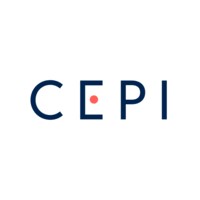
Overview
The potential for further geographic expansion of the rodent reservoirs, the ease of procurement and weaponization of the virus, the frequent importation to North America and Europe, and the recent emergence of novel strains in densely populated Nigeria necessitate development of broadly reactive, fast-acting, protective vaccines.
We recently determined the structure of the LASV glycoprotein trimer in complex with neutralizing monoclonal antibodies (MAbs) derived from Lassa fever survivors (Hastie et al ref). We are currently testing the hypothesis that this newly determined structure can guide design of novel LASV glycoproteins that rapidly elicit broadly protective immune responses against current antigenically diverse lineages of the virus. Through these efforts we intend to evaluate a first-in-class bivalent vaccine for all circulating lineages of Lassa virus and Ebola virus.
Hastie KM (2017) Structural basis for antibody-mediated neutralization of Lassa virus. Science. 2017 Jun 2;356(6341):923-928. doi: 10.1126/science.aam7260. PubMed PMID: 28572385; PubMed Central PMCID: PMC6007842.
Zalgen efforts to address this urgent vaccine need are directed onto two fronts: 1) internal development of a novel vaccine in conjunction with our VHFC partners, and 2) a strategic collaboration with the Coalition for Epidemic Preparedness Innovations (CEPI) and their global program to fund development, manufacture and stockpiling of vaccines against known human threats.

The VHFC Lassa Vaccine Program
Supported by funding from the NIH/NIAID, Zalgen and our partners are advancing a novel vaccine candidate built on the recently determined structure of the LASV glycoprotein trimer in complex with neutralizing monoclonal antibodies (MAbs) derived from Lassa fever survivors. (Hastie et al ref) This ground-breaking structure is the first prefusion trimer for the entire arenavirus family and is guiding design of novel LASV glycoproteins that rapidly elicit broadly protective immune responses against current, antigenically diverse virus lineages by using this novel crystal structure as a design template for further stabilization of native trimers in vaccine development.
Hastie KM (2017) Structural basis for antibody-mediated neutralization of Lassa virus. Science. 2017 Jun 2;356(6341):923-928. doi: 10.1126/science.aam7260. PubMed PMID: 28572385; PubMed Central PMCID: PMC6007842.

The CEPI Program for Lassa Vaccines
CEPI is an innovative partnership between public, private, philanthropic and civil organizations founded in Davos in 2017 to develop vaccines to stop future epidemics (www.CEPI.net). This includes funding global programs to advance vaccines against known threats through proof-of-concept and safety testing in humans and establishing investigational vaccine stockpiles before epidemics begin. CEPI is currently providing funding to numerous organizations to develop vaccines including Lassa, and its broad support is serving to significantly increase awareness and progress against this disease.
Zalgen is a major supplier of recombinant Lassa virus glycoprotein, nucleoprotein, and Z matrix protein antigens to CEPI funded LASV vaccine developers via a subcontract from Tulane University. Additionally, Zalgen supplies ready to use diagnostic kits for evaluation of IgG and IgM-based immune responses to vaccination with LASV vaccine antigens.
